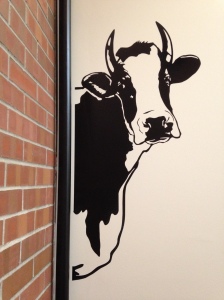Editing my own written work is a process that has, at times, seemed fruitless. Throughout my years of academic writing I have received many helpful insights on becoming a better writer, and even a better reader of other’s work, but I hadn’t found an effective process for editing and reading my own work until recently. For the most part, my editing was merely revising sentence structure and word choice – I never felt I had enough distance from my work to see the larger, general issues with the flow of the entire work or gaps in my argument. I have found two techniques for editing that aim to expose some of the key issues in a draft that may not be immediately obvious to the writer.
The first editing technique was introduced to me by Rebecca Hanrahan, a Whitman College Professor. This technique is easier with a computer, but can certainly be done on paper or out loud.
- Underline the single most important sentence in each paragraph.
- Copy and paste each sentence, in order, into a new document to make a single paragraph of these critical sentences. This will serve as a “reverse outline” for the work you have currently.
- Read the paragraph and see if the thesis is clear, if a coherent argument comes through, and if there are any large gaps in reasoning between each sentence.
This editing strategy has been very helpful in my own writing because it allows me to take a general look at a piece of writing that is not available when reading through the whole piece. Often times I find 2-3 important sentences in one paragraph, and realize I can spend more time developing each one into a more substantial concept or even a new paragraph. This technique has helped me to get a broader view of the direction and flow of my writing in a specific piece.
The second editing technique has been loosely adapted from advice from my advisor, Tom Davis. This technique is great for reassessing what still needs expansion in a paper, as well as clarifying intentions to oneself and the reader.
- For each paragraph, including the introduction and conclusion, make a list of questions that you hope to answer (include both questions you have left unanswered and ones you have addressed). The questions can be universal (eg. “Why should the reader care about this paper?”) or very specific (eg. “What is Arendt’s conception of action? How does this differ from traditional theories in Philosophy?”).
- When rewriting or writing anew for a second draft, use these questions to drive your writing – look back to these questions to see if you clearly express the questions you wish to answer and use the new, unanswered questions to move forward with new concepts.
Although I find this strategy most helpful in the editing stage of writing, it could certainly be used as a brainstorming technique after developing a subject or topic for a paper. This exercise has been very helpful for moving forward into new ideas in a second draft, in addition to clarifying the work I have already done in my first draft. My writing is often fueled by questions, or even framing certain arguments as answers to a question, so I recognize that this editing technique really caters to my own writing style. I also note that this second technique has been particularly helpful when applied to long seminar papers with several sections or sub-thesis statements, which can easily become abstract or unclear. In a long piece of writing, it can be incredibly helpful to address the questions your writing hopes to answer and to plainly state those questions for the reader.
Editing can be much more than merely putting on the finishing touches – it can be a critical turning point for rewriting and developing what lies dormant in a current piece of work. I have found these techniques inspiring when moving forward into a second draft or even finishing a first draft when I feel stuck. I hope they are as successful for others as they have been for me!

Loved this strategy! I especially found it helpful with structure: by using it, I realized that I should move a body paragraph to another place so that the paragraphs and ideas would have a more logical flow.